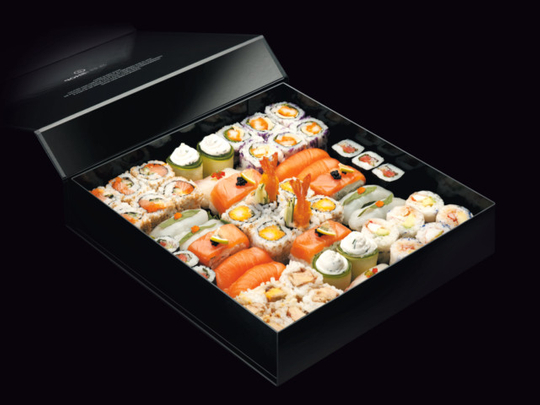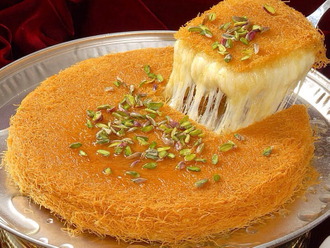
Sushi restaurants in this town cover every shade in the spectrum, whether you want to have a start-of-the-month blowout at Okku/Zuma/Nobu, a Bento Ya office lunch or are eking out your paycheck with some Carrefour California rolls.
So is there room for one more?
If it’s SushiArt, then absolutely, yes. In fact, everyone from Nobu to your neighbourhood delivery needs to be worried about this French arrival.
Yep, that’s right. French sushi. And it’s pretty great. Consider this: foie gras sushi and sea bream-jalapeno sashimi, delivered in up to 30 minutes.
“You can have high-end sushi in front of your TV,” says the brand’s local partner, the suitably French Christophe Raygot. The company, which has dozens of outlets across France and 100 total worldwide, prides itself on serving unique twists on sushi — how about tabblouleh maki? — with super-fast delivery. (I put them to the test several times; they delivered in Downtown and Shaikh Zayed Road in less than half an hour.)
Raygot doesn’t see anything unusual in mixing the two cuisines. “It’s simply Japanese zen with the French ability to enhance flavours,” he says, over a plate of marinated chirashi, a Mediterranean tweak on the Japanese dish of sashimi served atop a bowl of rice. Here, it’s a mix of salmon and tuna, seasoned with finely sliced cucumber, spring onion, coriander and sesame.
The French didn’t take to sushi as an everyday food as immediately as other countries, says Raygot. “The French are quite picky for food. So you can understand for them to integrate sushi, it has to be quite refined.” That explains why you’ll find a sushi roll with foie gras and figs (the so-called French Touch roll, Dh43, deliciously melting and for foie gras fans, a welcome new vehicle for the creamy liver), and nigiri topped with seared truffled miso wagyu beef (Dh22 per piece).
But aside from the more unusual combinations, there’s a focus on quality ingredients and a refined approach to flavour — no stringy tuna or greasy salmon here. One flavour innovation is their “spring rolls” — where maki rolls meet Vietnamese rice paper rolls. By removing the nori seaweed and replacing it with a thin, crisp layer of lettuce and rice paper, different flavours come into play.
“All those without the nori are the creation of SushiArt,” says Raygot, pointing out the “Tuscan” roll — shrimp, pine nuts, mesclun salad and truffle oil (Dh32). The lack of seaweed means things such as truffle and pine nut — classical Mediterranean ingredients — can be treated in a Japanese style without an odd clash of flavours.
“It’s very logical, it’s very southern, but the nori would block it. With spring rolls you can play differently with the flavour. It’s quite successful — the rice paper and lettuce are fresh and very light, and showcase the ingredients fully. Other options are spicy salmon or tuna, cooked tuna and avocado and a tangy “Vegetarian” with avocado, cucumber, omelette and the punch of fresh mint.
The nori-wrapped Tabblouleh roll (Dh18), interestingly, isn’t an attempt to curry favour locally — it’s been on the menu in French outlets from the start, and, says Raygot, is a good combination. “It’s very vegetable. It matches with the nori. The Mediterranean influence is very accessible and it’s something that is quite accepted and integrated directly [into sushi].”








